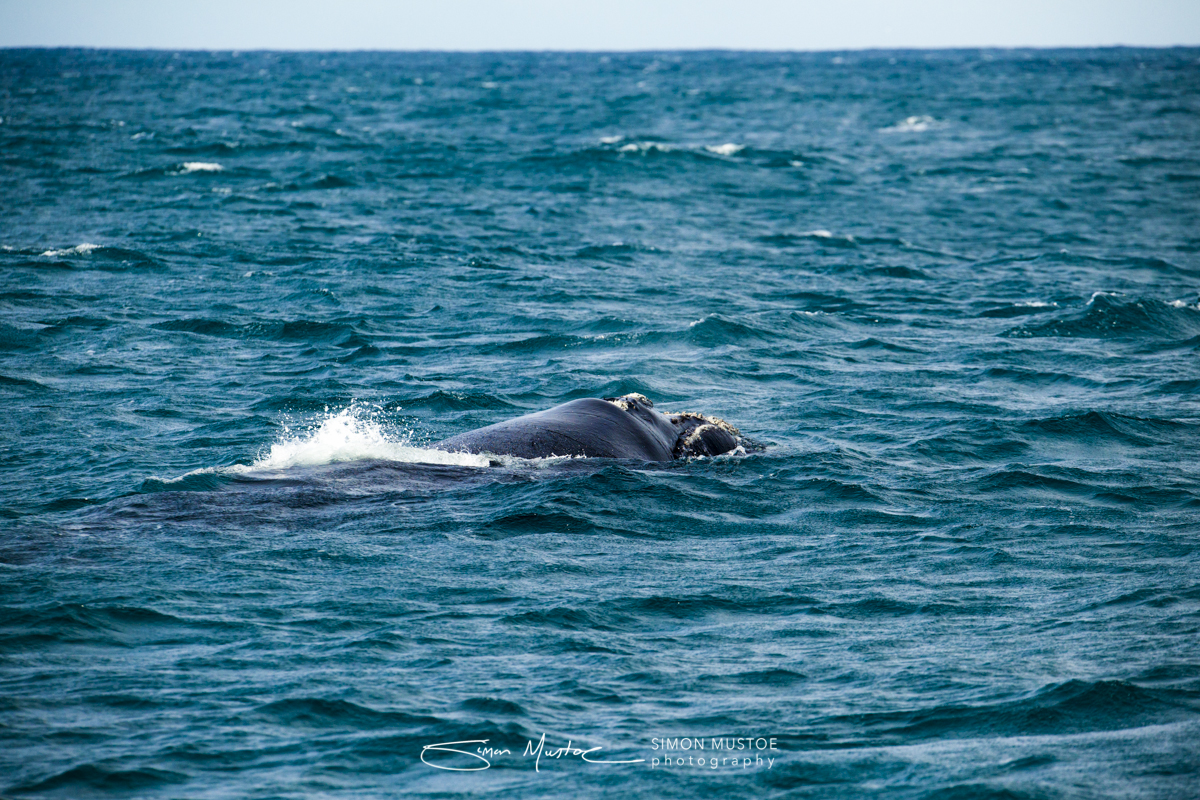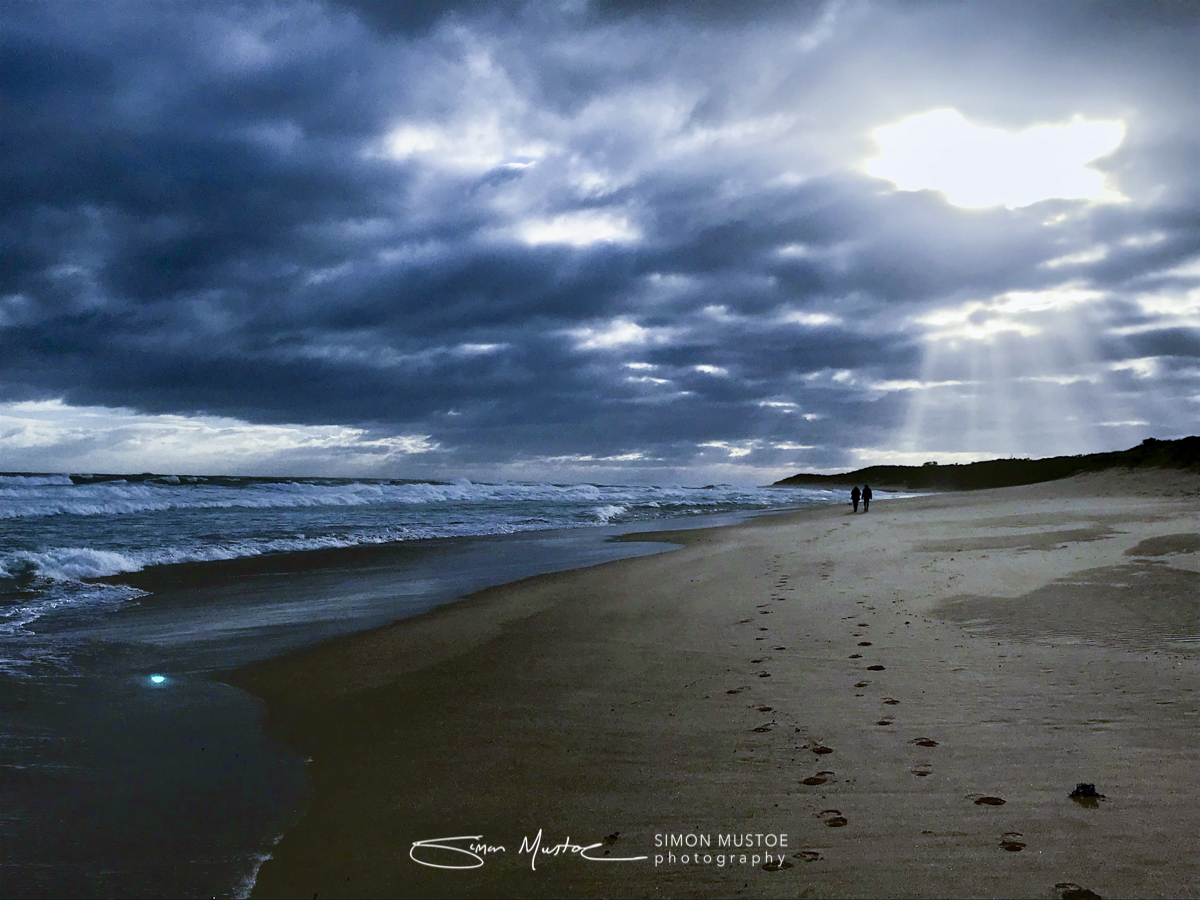
Whale Watching on Melbourne's Prehistoric Coast
Twenty years ago the number of Humpback Whales off Australia's east coast was as little as a quarter of the estimated 33,000 that now make the journey from Antarctica each year. Some experts estimate the population may have almost recovered from the impact of whaling. So it's great news our generation can enjoy seeing whales off Victoria's coastline once again.
Winter is also a great time to get to the coast. The wind is fresh and the air is clean, the ocean is lively and there are relatively few people around. You can still feel like you're the only person on Earth. There's also loads of wildlife to see if you know what to look for.
Our journey started in the vicinity of Kilcunda, San Remo and Cape Paterson.
While winter generally brings calmer (if not cooler) weather to our shores, this weekend was windy with strong north-westerlies. The first day we spent walking from Kilcunda to Cape Paterson (about 23km) along the beach.
Kilcunda to Cape Paterson Walk
With the sun out almost all day, it was pleasant. Heading east we had the wind, and more importantly the blowing sand, behind us. We knew we were walking just before a new moon and low tide was middle of the day, both factors that enabled us to safely navigate a couple of wave-cut platforms around headlands. Knowing something about how these forces interact can be very useful (see below).
The Powell River, which rarely reaches the see, was in full flood so we had to detour inland to cross the road bridge. The whole walk took about 6 hours and we saw 55 endangered Hooded Plovers ... about ten times more people than on the entire walk! Hooded Plovers are unique to our beaches and they nest precariously on the sand. Chicks are prone to predation by dogs, which is why you'll often see fenced off areas and why it's really important to keep your best friends on a lead during the breeding season.

There was a continuous stream of Shy Albatrosses cavorting behind the breakers. These are Australia's albatrosses. Unlike their Antarctic-going cousins, they are often seen feeding in shallow coastal waters and they breed in the summer months on just three Tasmanian islands, the nearest being in Bass Strait. One of the smaller albatross, they nevertheless sport a 4m wing span and effortlessly quarter the ocean on bent wing-tips, catching a breeze off waves, alternating between heart-stopping low-level manoeuvres and high arching glides, the sun reflecting off their pure white undersides.
A Prehistoric Geology
From Harmers Haven eastwards the geology of the coastline changes markedly. This is a place where some of Australia's most famous dinosaur discoveries have been made such as the 'Cape Paterson Claw'. The soft grey rocks date from the early cretaceous about 120 million years ago. The first thing you'll notice are they contain what almost looks like freshly-burnt timber - in some places whole tree trunks are exposed. This is fossilised vegetation from when dinosaurs roamed the Earth. When they were alive, the location was close to the south pole and the landscape would have likely been mountainous with great rivers flowing through what may have looked like a tundra-style habitat. The dinosaur discoveries are mostly in a very thin layer associated with a river bed, where fossil fragments would have washed into the mud.

Whale Watching
Our hope of seeing any whales on the walk was pretty well dashed by the swell and huge breaking waves, so were pleased to have the chance to go out with Wildlife Coast Cruises the next day from Rhyll on Phillip Island.
Though the seas were still rough and we were given the option of travelling on a different day, we decided to take the plunge knowing the wind was from the north. It's also too easy to pike out based on a weather forecast when you really don't know what it's going to be like. This was one of those days we would have regretted that decision.
We departed Rhyll at 9AM with the plan to circumnavigate the island. Within 20 minutes we'd spotted the first Humpback Whales, a pod of two that appeared to be a mum with a dependent calf from last year. Remaining a respectful distance the whales were given opportunity to take a look at us but decided to remain on their course so we approached no closer.
 With the win now behind us, it was plain sailing and pleasant to watch the whales' activity from the bow of the vessel. The choppy conditions always make for more interesting photos than in a flat calm sea anyway.
With the win now behind us, it was plain sailing and pleasant to watch the whales' activity from the bow of the vessel. The choppy conditions always make for more interesting photos than in a flat calm sea anyway.
Shy Albatrosses came and landed in the water right next to the boat or sailed over the bow almost within arms-reach. A mischievous Australian Fur-seal from the nearby colony appeared alongside and a Little Penguin appeared briefly among the waves.

The highlight of the day was yet to come however, when Captain received a radio report of a Southern Right Whale off Summerland Peninsular.
There are 100x fewer Southern Right Whales in Victoria than Humpback Whales. This was a species almost wiped out by whaling and the first time we've seen one from a boat. So it was exciting as we approached the area, especially when we saw it and we stopped, it turned to come and check us out!
Southern Right Whales are known to be quite inquisitive though we suspect noise conditions were somewhat limiting the curiosity of all the whales today - as is the case when in the vicinity of any wild animals.

Imagine for a moment these are creatures noise-dependent underwater in the same way as we are vision-dependent in air. If we hear a strange noise at night when our sense is limited, we get nervous. Whale watching boats are noisy (a key reason to maintain distance and limit number of operators). Today's sea conditions would have been the acoustic-equivalent of fog or a dark room. Sound is created by waves of pressure so the moving sea does the same and with chop and swell creating sounds at a pitch equivalent to their wave-lengths, masking animals' abilities to sense what's around them.
Nonetheless, the Southern Right Whale appeared closely and on more than one occasion used its excellent vision to eye-ball us from the surface, spy-hopping with the Phillip Island coast in the background.
And to round it all off, the two Humpback Whales we saw earlier rejoined us (at this point we had barely moved for half an hour) and we had the two species side by side ... quite an extraordinary thing to see.
So it just goes to show, you can't always predict how animals will behave or what turns out to be a great or a mediocre day out. The colder weather should never stop us from enjoying an incredible experience as winter has a lot to offer. All you've got to do is get out among it and see what you can see.

Understanding the Moon & Tides
Tides vary by a bit over an hour a day. It's no coincidence a full tidal cycle takes about 30 days, which is also the time it takes for the moon to revolve around the Earth, since it's the gravitational pull of the moon that creates tides. When the moon is closest, the variation in tides is largest (these are called 'Spring tides') and when it's furthest away, the variation is smallest (the 'Neap tides'). We were walking close to a neap, which meant the high tide wasn't pushing right up against the dunes. Then each day, the moon exerts its influence on the tides as the Earth rotates, hence high and low tides. Because it takes about a month for a full tidal cycle, you can roughly add 1 hour onto the tide times each day (so a midday tide would be 1pm tomorrow and so on). You can usually see the tide level by the seaweed strandline and walking outside that is generally safest. By consulting a tide app, we were able to time our walk (at an average of about 5kph) so we were close to low tide when we would be forced to cross wave-cut platforms. On this walk it was relatively safe but at high tide, with a 3m swell and occasional rogue waves, you could get very wet (or worse) attempting this.
Walking from Kilcunda to Cape Paterson
If you're trying the Kilcunda to Cape Paterson walk, our advice would be to check tides thoroughly as there is very little beach access anywhere along the route.
Buses are infrequent, there are no Uber and taxis (order in advance!) come from Wonthaggi or San Remo and are costly. We were lucky that someone agreed to pick us up from Cape Paterson and drive us back. This is a beautiful walk ... which can be added to the Bass Coast walk from San Remo ... but not much attention has been given to the transport side yet.
More information & Thanks
Thank you to Wildlife Coast Cruises for their hospitality. Please visit them at https://www.wildlifecoastcruises.com.au/
Whale season off Phillip Island is mostly July/August. There are also new operations out of Wilson's Promontory during the Humpback southern migration running later in the year.
Don't forget to follow the Two Bays Whale Project on Facebook: https://www.facebook.com/twobayswhales/
Dinosaur Dreaming trips here: https://www.facebook.com/groups/10701562185/
Island Whale Festival: http://islandwhales.com.au/
George Bass Coastal Walk: https://www.basscoast.vic.gov.au/explore/leisure-and-recreation/george-bass-coastal-walk


